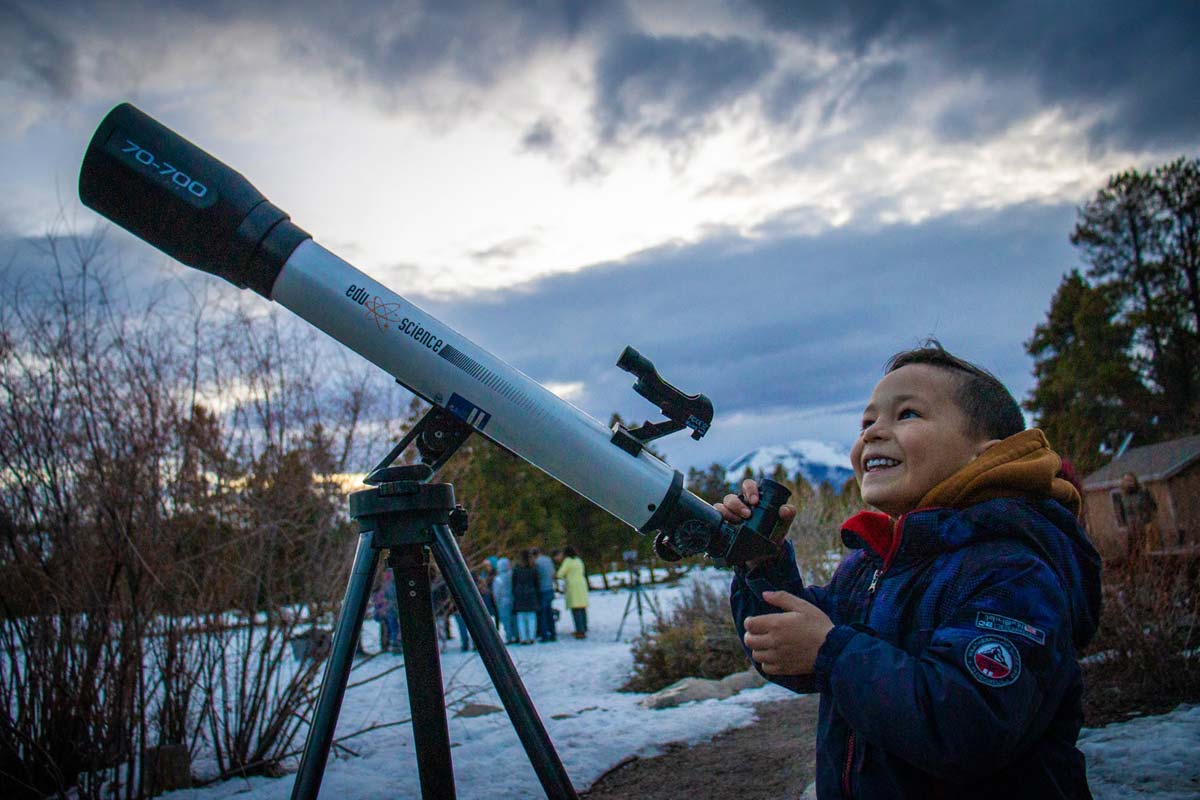By “Astro” Mark Laurin
The night sky in March is different. More of a feeling type of difference, than a celestial difference. March is a month of transition for the celestial dome overhead. Most significant is the vernal equinox, the transition from winter to spring. The returning Sun rides its ecliptic path noticeably higher in the sky. Days grow longer, and the nights feel not so cold. (Dare I say this living in the mountains?)
The transition benefits the stargazer. Why? We can observe many of the outstanding gems of the winter sky without straining our necks to look up, and being outside at night is a bit less brutal. Moreover, these spectacular jewels are viewable earlier in the evening. But, what makes stargazing in March extra special this year? Lots-o-Conjunctions!
Conjunction of Jupiter and Venus, March 1st and 2nd
To begin, an astronomical conjunction is when two or more astronomical objects appear close to each other, to share the same spot in the night sky. The objects will share the same right ascension, or ecliptic longitude. Basically, an “east-west” position in the sky. This evening, this conjunction is tight, tight, tight! Look south-southwest around 6:15 pm MT, toward the Moon, right as the sun is setting. The two brilliant lights are Jupiter, on the left, and Venus, on the right. Can you notice the difference in color between the two planets? By 8:30 pm MT, the dual sets in the west. The sight will be stunning so be sure to check it out. Grab your binoculars and view Jupiter’s Galilean moons too!
The Vernal Equinox, March 20th
We have four seasons on Earth; winter, spring, summer, and autumn. These seasons divide our journey around the Sun and result from our planet’s angle to the Sun. To complicate things, the season in the northern hemisphere is the opposite of the season in the southern hemisphere. It’s that darn Earth angle to the Sun thing again. The Vernal Equinox is at 6:24 pm MT and is the astronomical beginning of the spring season in the northern hemisphere; and the beginning of autumn in the southern hemisphere. If you’re standing on the equator at the time of the spring equinox no matter where you are on Earth, the Sun will be directly overhead (assuming it happens in daylight hours). From this date forward the Earth tilts more towards the Sun in the northern hemisphere giving us more daylight hours, earlier dawns, and later sunsets. Oh yeah!
Oh, if you’re inclined, go ahead and try to stand an egg on end. (It’s an old wives’ tale. You can balance an egg on end on any day of the year, if you’re patient.)
Conjunction of the Moon and Venus, March 24th
An astronomical conjunction is all about a point-of-view. Specifically our point-of-view from Earth out to space For instance, during the conjunction of Jupiter and Venus, the two are separated by a scant .52 degrees, and now for the Moon and Venus the angular separation is 31.2 arc minutes, and here the skinny separation is .58 degrees. Yet, the distance between the Moon and Venus at that time is approximately 23 million miles. That a good distance! That evening, Venus will also float below the slim 3-day old waxing crescent Moon. This young Moon, next to bright Venus, for some resembles a wink. What do you think?
Conjunction of the Moon and Mars, March 28th
For the astrophysicist, conjunctions are not of significant scientific importance. For the rest of us, conjunctions catch our attention, we notice them. Beyond the simplicity, consider motion and the chance involved for these spinning, and orbiting objects to line up and align for our enjoyment? Need a calculator? At the time of this conjunction between the Moon and Mars, the angular separation between the Moon and Mars is 83 arc minutes, which is 1.3 degrees. Yet, the Moon at that time is around 50 million miles away from Mars. The 7-day old first quarter Moon is almost straight above overhead, with the Red Planet to its lower right. For more fun, follow a line segment starting with the Moon, and then connecting to Mars. Continue this straight line to the southwest, you will see the reddish-orange double star, Aldebaran. This is the 14th brightest star in the night sky.
An Arch of Objects – The Moon, Mars, Venus, Mercury, and Jupiter, March 29th
Here’s a chance for you to view The Moon and five planets easily, and all at one time. Shortly after sunset, around 7:15 pm MT, look up straight above to the Zenith, that is the point in the sky directly overhead from where you stand. The waxing gibbous Moon is easy to spot. With the Moon as the starting point near the Zenith, draw and follow a soft arching line to the cardinal point west, on the western horizon. At the time the sun sets, the brightest object next to the horizon is Jupiter. Between the Moon and Jupiter unevenly distributed you’ll see Mars, Venus, and Mercury. What makes this line up different is Mercury is higher in the sky than Jupiter. It is an odd day when an inner planet (Mercury and Venus) is higher in the sky than an outer planet (Mars, Jupiter, Saturn, Uranus, and Neptune). Strange indeed.
It’s time to stargazing. Sure, you still need to dress warm, wear a hat and gloves, and tolerate the cold, but all a little less so. Transition is in the air. The payoff is to comfortably gaze at these conjunctions, early in the evening after dinner and before the bite of the winter night arrives. Can you do me a favor? As you view these conjunctions over the month and the other colorful jewels tossed haphazardly across any late winter night, notice just how expansive the universe is and take a moment to inhale a March night.
Clear skies to you!




